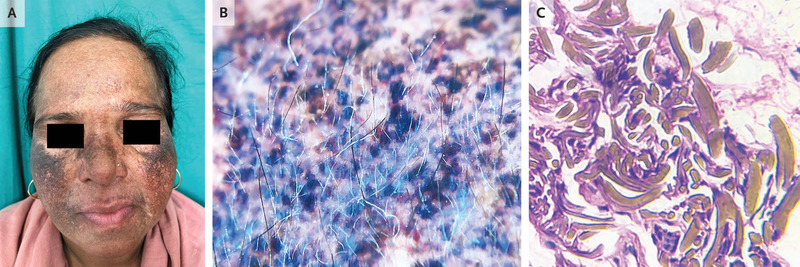Unveiling the Dermatological Consequences of Skin-Lightening Creams

In a revealing case study, a 55-year-old woman experienced significant skin darkening after using a hydroquinone-containing skin-lightening cream, leading to a diagnosis of exogenous ochronosis. This condition highlights the potential risks associated with cosmetic skin treatments and underscores the importance of understanding their long-term effects. Physicians should be aware of the diagnostic challenges and management strategies for this condition, which can often be misdiagnosed due to its rarity and resemblance to other dermatological disorders.
Key Points:
- The patient presented with a one-year history of facial skin darkening, initially using hydroquinone for melasma treatment.
- Physical examination revealed bluish-brown patches with erythema and telangiectasias on the cheeks, nasal bridge, and perioral region, and lesser involvement on the forehead.
- Dermoscopy showed hyperchromic, pinpoint macules.
- A skin biopsy from the left cheek indicated extracellular deposition of yellow-brown, banana-shaped bodies in the dermis.
- The diagnosis was exogenous ochronosis, a hyperpigmentation disorder from the accumulation of ochre-colored deposits in tissue.
- Exogenous ochronosis, distinct from the endogenous type related to alkaptonuria, is associated with the use of skin-lightening agents.
- Treatment is challenging and may not be reversible; it includes photoprotection, cessation of skin cream, and potentially topical emollients and retinoid gel.
- After two months of follow-up, the patient showed minimal reduction in hyperpigmentation.

According to the American Academy of Dermatology, melasma affects an estimated 5 million Americans. Its treatment often involves hydroquinone, underscoring the importance of understanding potential side effects like exogenous ochronosis.
More in Dermatology
